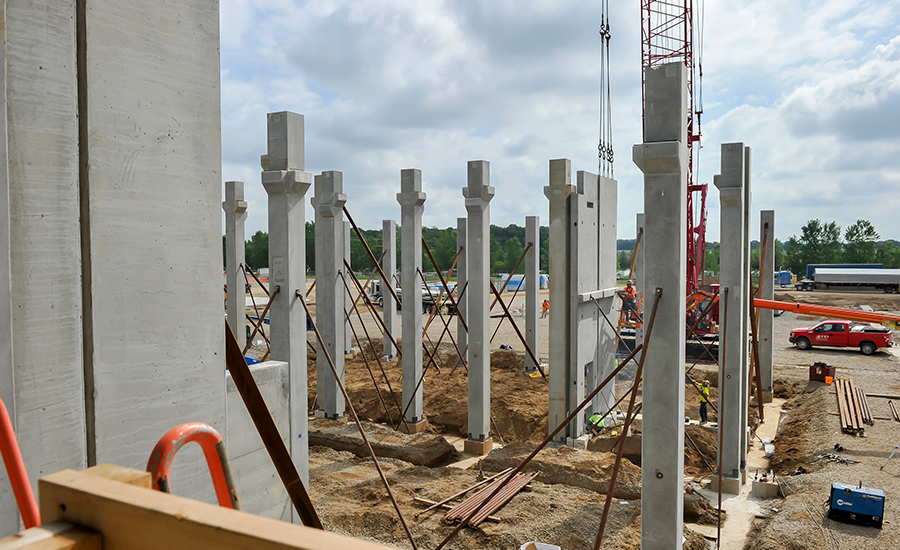FOOD ENGINEERING’s 45th annual plant construction survey
Supply chain issues continue to impact project planning and construction.

Photo courtesy of Shambaugh & Son.
The current supply chain is still reeling from instability caused by the pandemic, resulting in a shortage of transportation, materials and labor. Consequently, food and beverage companies are feeling the direct effects of supply chain issues when planning and constructing new facilities or expanding their existing plants.
This year’s Annual Plant Construction Survey reflects the problems that COVID-19 started in 2020. For A&E/C (architectural & engineering/construction) firms, the top-three issues are: (1) fast project deployment, (2) overall costs/controlling costs and (3) scheduling equipment arrival to the job site. All three concerns are directly affected by supply chain issues.


The top three issues that A&E/C firms say affect their client food processors the most are (1) increasing production to meet consumer demand, (2) overall costs and controlling costs and (3) workforce availability (line workers).
► 2021 projects edge out 2020 projects
► New projects versus expansions
Mark Galbraith, co-owner of Galbraith Pre-Design sees the same issues for both food processors and A&E/C firms, mostly brought about by COVID-19 and ensuing supply chain issues. Food processors are busier than ever and can’t seem to get ingredients and packaging materials quickly enough—a real supply chain pinch point. Another pinch point is the shortage of drivers and rigs. “This is very similar to the construction industry,” says Galbraith.
With changing consumer demands, processors are redefining their production lines and concentrating on speed-to-market, says Greg Franzen, Faithful+Gould program director. With recent cost increases and inflation concerns, there is a new focus on reevaluating how projects are designed to eliminate unnecessary specifications and the “we have always done it this way” mentality.
It seems, however, with all this emphasis on these top concerns related to supply chain issues that interest in food safety has waned. There was a time not so long ago—just back in 2020—when food safety was among the top three concerns out of the top ten, but most processors and A&E/Cs now have food safety pretty much under control since FSMA has become the law of the land. Processors and engineering firms know what has to be done to make food plants food safe.
Even so, the business climate for new and expanded projects has been healthy over the past couple of years in spite of the pandemic and supply chain issues. “We are currently seeing historic levels of demand for capital expansion projects in the food and beverage sector,” says Dan McCreary, senior partner at the Dennis Group. Despite escalating construction costs, there has been a noticeable increase in the number of large ground-up development projects being greenlit. Investment is coming both from large, established CPG companies as well as venture-funded start-ups in rapidly growing market sectors such as plant-based protein or controlled environment agriculture.
Indeed, small projects seem to be on the increase as Mark Redmond, Food Plant Engineering president, says. “We continue to see an increase in the number of entrepreneurs who approach us wanting to develop small processing plants for local distribution. We have also been approached by many meat processors seeking to expand their current operations.”
End of Part 1
Looking for a reprint of this article?
From high-res PDFs to custom plaques, order your copy today!






